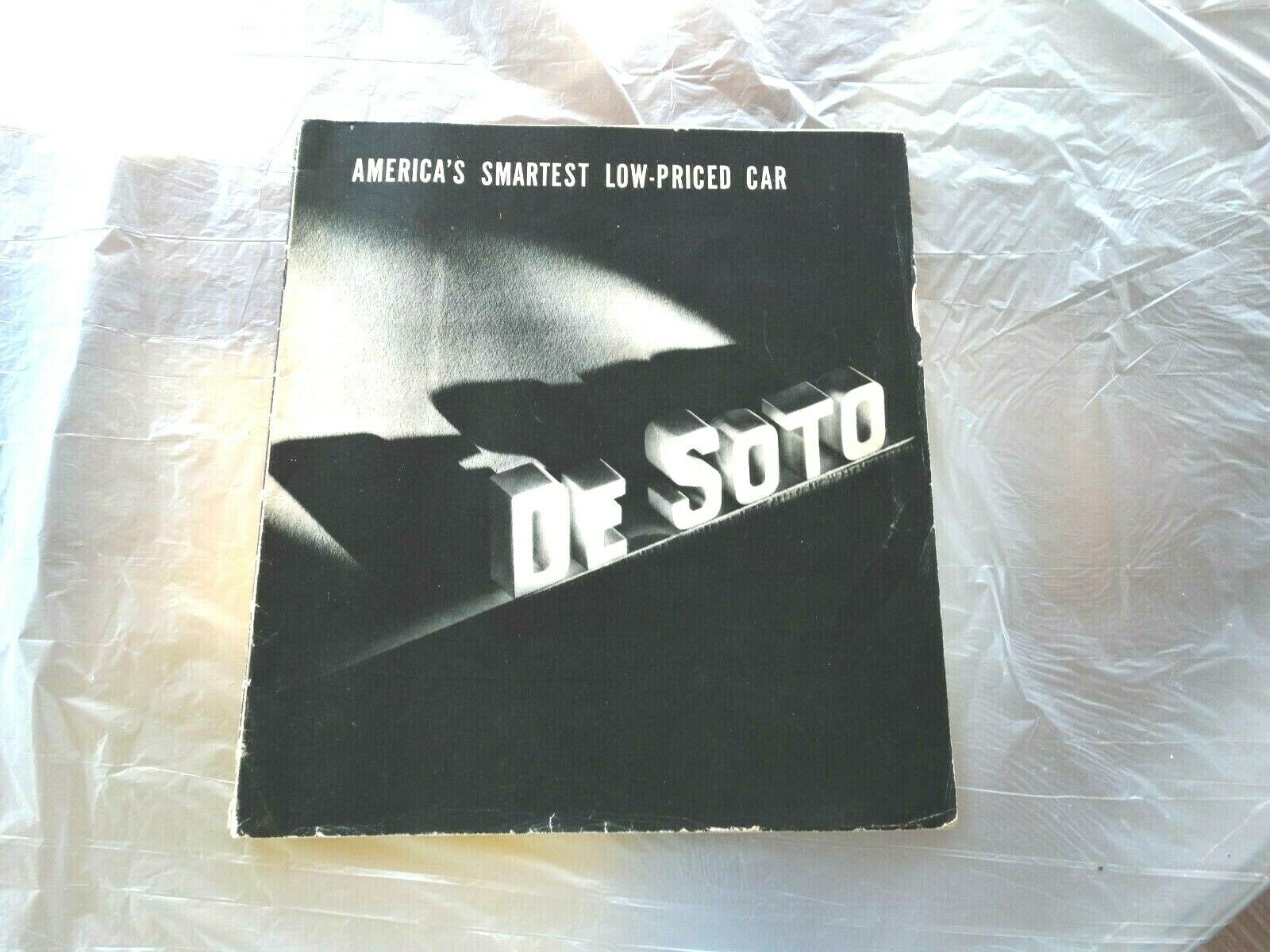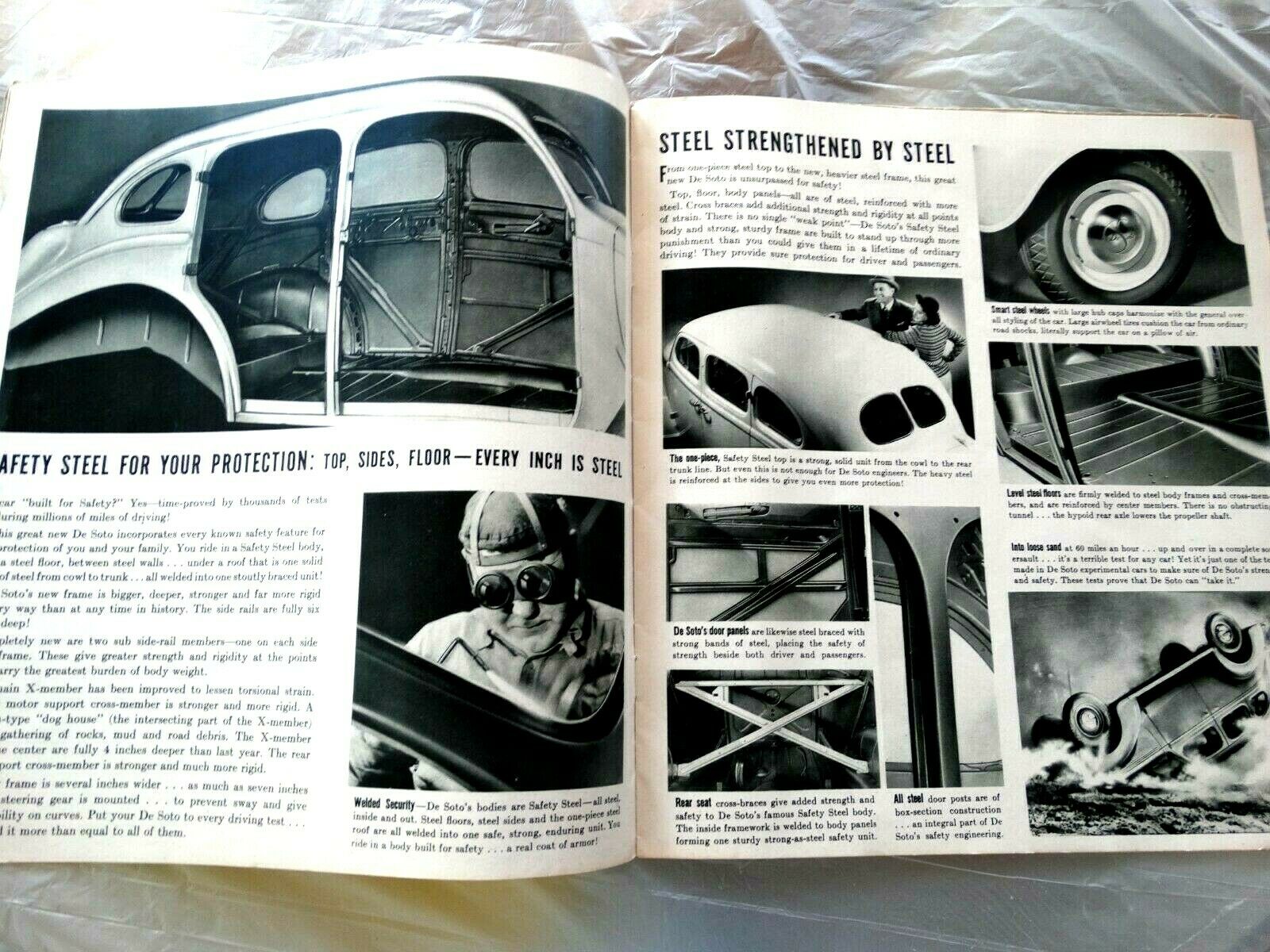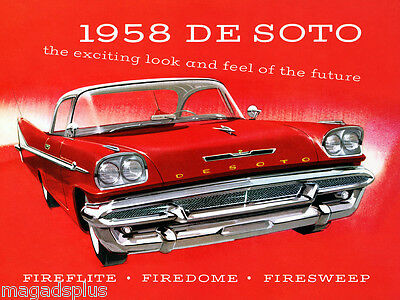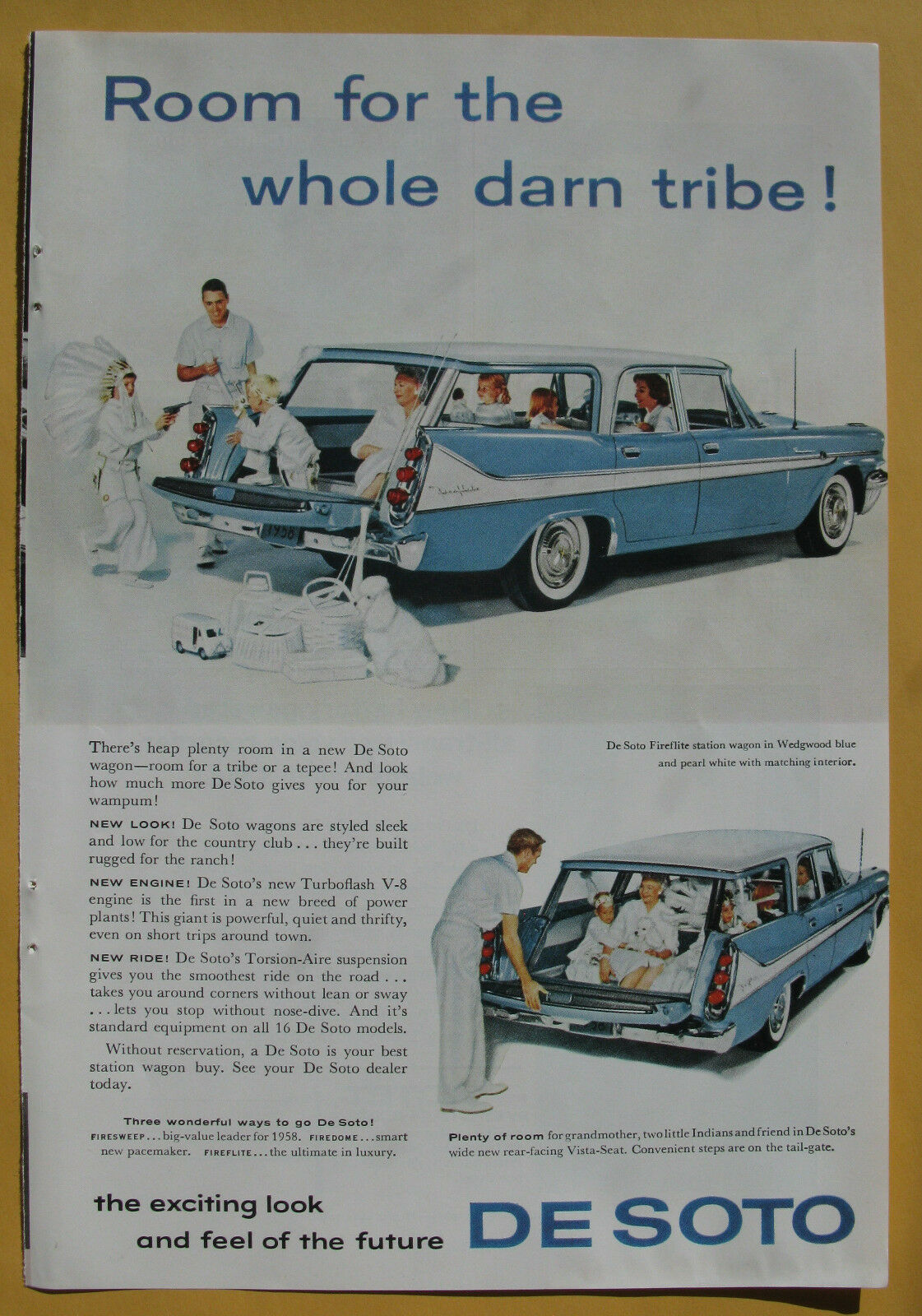-40%
1938 DeSoto Brochure
$ 8.91
- Description
- Size Guide
Description
This is a 24-page brochure for the 1938 Chrysler DeSoto. It measures approximately 9 x 10 inches and contains text, specifications, black & white illustrations and photos about all aspects of the 1938 DeSoto automobile.DeSoto (sometimes De Soto) was an automobile marque manufactured and marketed by the DeSoto division of Chrysler from 1928 to the 1961 model year. DeSoto was a well-established brand that produced passenger cars and trucks for more than three decades in the United States. More than two million DeSoto vehicles were built for markets in North America.
The DeSoto make was founded by Walter Chrysler on August 4, 1928, and introduced for the 1929 model year. It was named after the Spanish explorer Hernando de Soto, who led the first European expedition deep into the territory of the modern-day United States and was the first documented European to have crossed the Mississippi River. The DeSoto logo featured a stylized image of the explorer.
Chrysler wanted the brand to compete with Oldsmobile, Studebaker, Hudson and Willys in the mid-price class. DeSoto served as a lower-priced version of Chrysler products, with Dodge and Plymouth added to the Chrysler family in 1928.
In the inaugural DeSoto model year of 1929, 81,065 cars were produced, a first-year record in the U.S. that lasted until the introduction of the 1960 Ford Falcon. However, shortly after the DeSoto was introduced, Chrysler completed its purchase of Dodge Brothers, giving the company two mid-priced makes. Initially, the two-make strategy was relatively successful, with DeSoto priced below Dodge models. Despite the economic times, DeSoto sales were relatively healthy, pacing Dodge at around 25,000 units in 1932.
In 1933, Chrysler reversed the market positions of the two marques in hopes of boosting Dodge sales. The DeSoto received Chrysler's streamlined 1934 Airflow bodies, but on the shorter DeSoto wheelbase, the design was a disaster and was unpopular with consumers. Unlike Chrysler, which still had more traditional models on which to fall back, DeSoto was hobbled by the Airflow design until the 1935 Airstream arrived.
Aside from its Airflow models, DeSoto's 1942 model is probably its second-most memorable model from the pre-war years, when the cars were fitted with powered pop-up headlights, a first for a North American mass-production vehicle. DeSoto marketed the feature as "Air-Foil" lights ("Out of Sight Except at Night").











